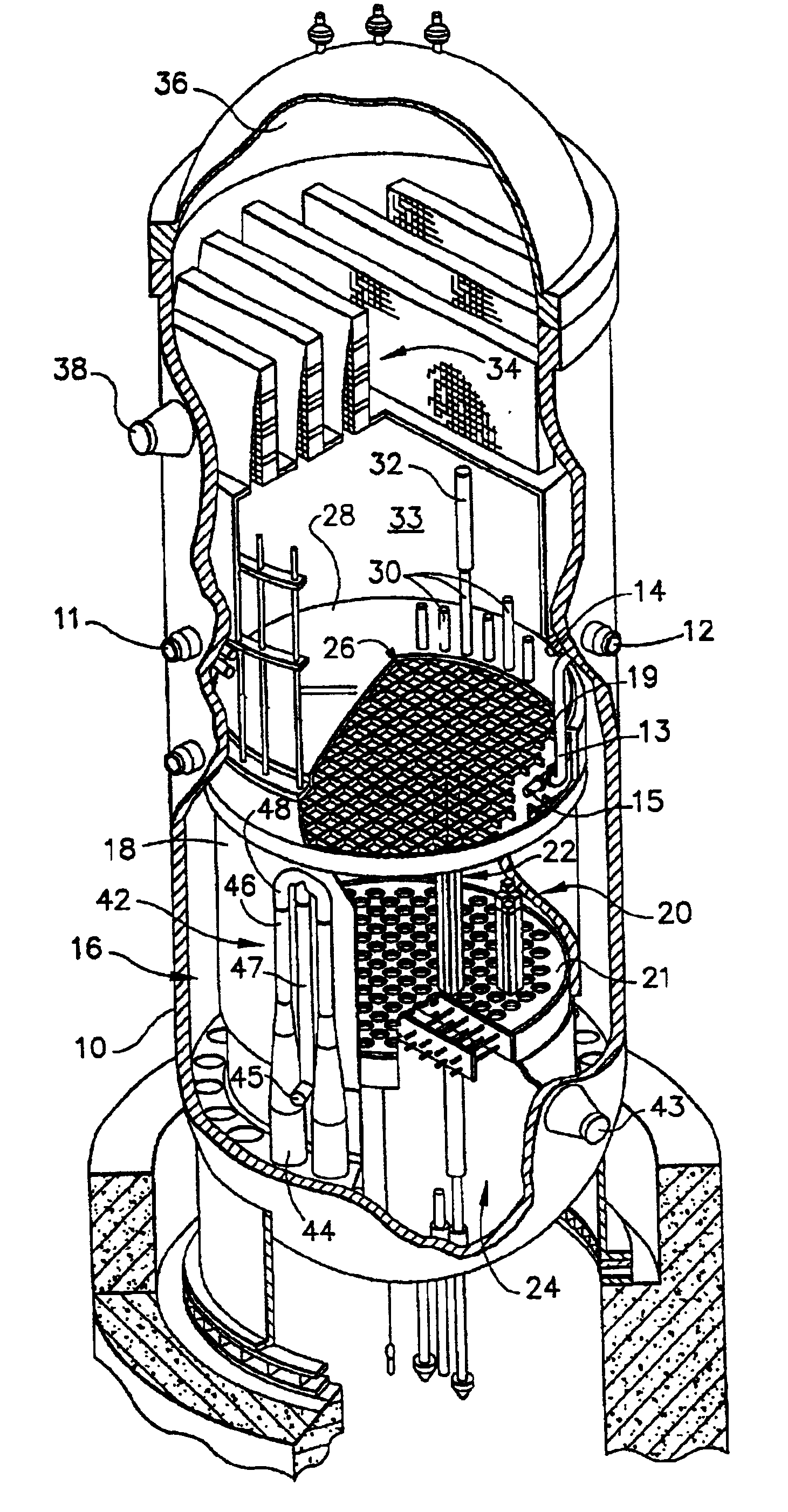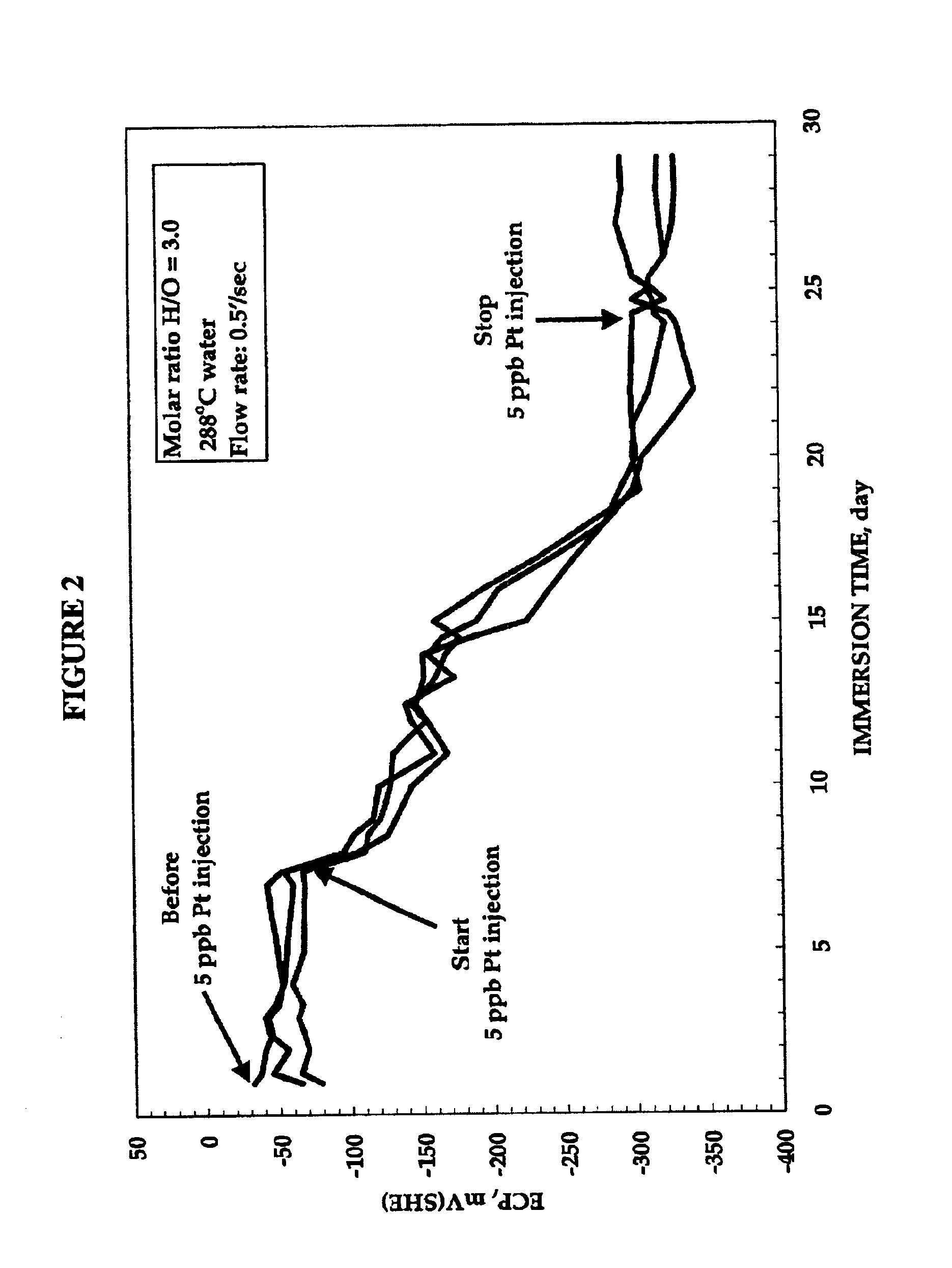Application of catalytic nanoparticles to high temperature water systems to reduce stress corrosion cracking
a technology of catalytic nanoparticles and high temperature water, applied in the direction of physical/chemical process catalysts, nuclear elements, greenhouse gas reduction, etc., can solve the problems of high environmental dose rate, high radiation level in steam-driven turbine section of bwr, and material corrosion, so as to reduce the electrochemical corrosion potential of components
- Summary
- Abstract
- Description
- Claims
- Application Information
AI Technical Summary
Benefits of technology
Problems solved by technology
Method used
Image
Examples
Embodiment Construction
The catalytic effect of platinum nanoparticle additions in a simulated BWR environment was studied by introducing platinum nanoparticles into water held at 288.degree. C. and containing excess hydrogen. The concentration of the platinum nanoparticles in the water was 5 ppb, and the molar ratio H:O was about 3:1. FIG. 2 is a plot of the electrochemical corrosion potential (ECP) of three different 304 stainless steel electrodes as a function of immersion time in 288.degree. C. water containing excess hydrogen. Under excess hydrogen conditions, the ECP of the electrodes gradually decreased with increasing immersion time during the addition of 5 ppb of platinum nanoparticles. The results indicate that the presence of noble metal nanoparticles, either colloidally suspended in the high temperature water or deposited on the surface of the stainless steel electrodes, catalytically enhances the kinetics of the formation of water by oxygen and hydrogen present in the high temperature water, t...
PUM
| Property | Measurement | Unit |
|---|---|---|
| mean particle size | aaaaa | aaaaa |
| mean particle size | aaaaa | aaaaa |
| mean particle size | aaaaa | aaaaa |
Abstract
Description
Claims
Application Information
 Login to View More
Login to View More - R&D
- Intellectual Property
- Life Sciences
- Materials
- Tech Scout
- Unparalleled Data Quality
- Higher Quality Content
- 60% Fewer Hallucinations
Browse by: Latest US Patents, China's latest patents, Technical Efficacy Thesaurus, Application Domain, Technology Topic, Popular Technical Reports.
© 2025 PatSnap. All rights reserved.Legal|Privacy policy|Modern Slavery Act Transparency Statement|Sitemap|About US| Contact US: help@patsnap.com



